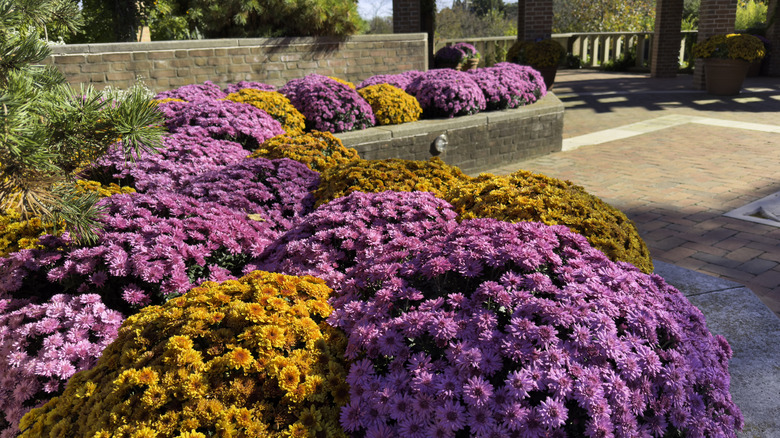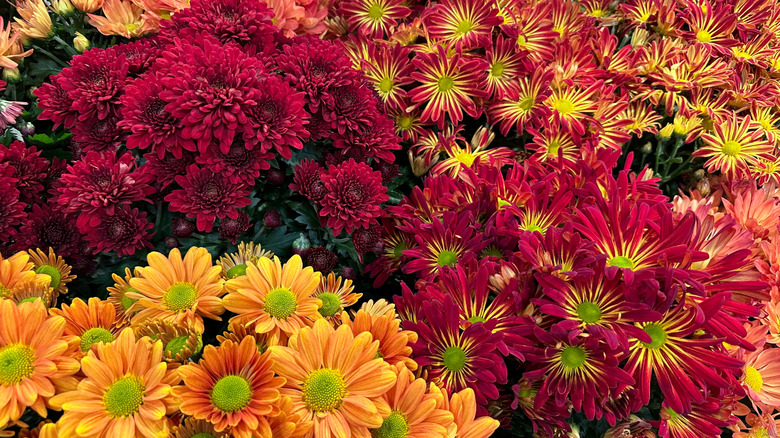Sun Or Shade? Here's The Best Place To Plant Mums In Your Garden
Some gardeners struggle to decide where to put mums in their garden, especially since these fall favorites are available in such abundance. When they don't have enough light, chrysanthemums can become weak and spindly, producing far fewer blooms than they would in a sunnier spot. Their flowering response depends on a combination of day length and sunlight, so the better the exposure they get, the more vibrant and plentiful the flowers will be. As such, the answer is clear: the best place to plant mums in your garden is where they'll receive full sun, ideally at least six hours each day.
Mums are incredibly versatile; there are plenty of beautiful mums to plant in spring in your garden, with several recommended by our professional gardener. If you're struggling to pick one variety, garden hardy mums (Chrysanthemum × morifolium) are reliable fall performers across many regions. USDA Hardiness zones 3 to 9 can enjoy various types of chrysanthemums as perennials, though their success depends on having the right growing conditions. Planting mums in a sunny garden spot ensures that they have the energy reserves to settle in and, hopefully, return the following year.
Location makes all the difference. While mums tolerate partial shade, the trade-off is fewer flowers and weaker growth. By choosing a spot that gets strong, direct light, you'll set them up to thrive. It's important to understand how sun exposure helps shape everything from bloom longevity to overwintering success, and how you can keep your mums healthy season after season.
The best place to plant mums
Though gardeners can benefit from a year-round guide on how to keep mums alive, the most crucial thing to know is that mums struggle without a minimum of six hours of full sun each day. Too much shade not only reduces flowering, it also increases the chance of mildew and other problems, making sunlight a core part of chrysanthemum care.
Beyond sunlight, mums need fertile soil to perform their best. Loamy or sandy beds enriched with compost provide nutrients and good drainage, while poorly drained sites can stress roots and shorten plant life. A sunny southern or southeastern exposure is especially helpful because warmth and air circulation combine to reduce frost damage and disease pressure. Adding mulch helps conserve the moisture of the soil your mums are in and keeps their roots insulated in colder weather.
Gardeners in shadier yards may wish to enjoy mums as seasonal displays in containers rather than long-term perennials. There are techniques used on flower beds and for potted chrysanthemums the ensure they come back every year. Once mums are established, they display vivid, eye-catching blooms, which makes them more than worth the effort required to keep them healthy. Hardy varieties usually return each year in the right USDA zones, though longevity is improved when plants are allowed to root deeply in sunlit soil, so be sure to read up on potted mum care as well.

